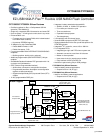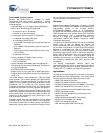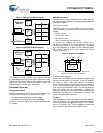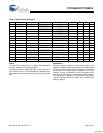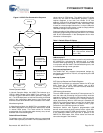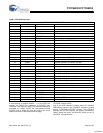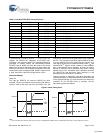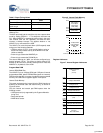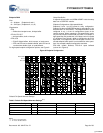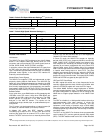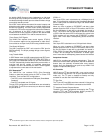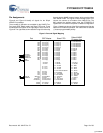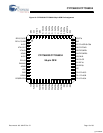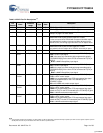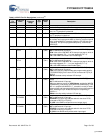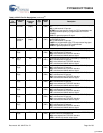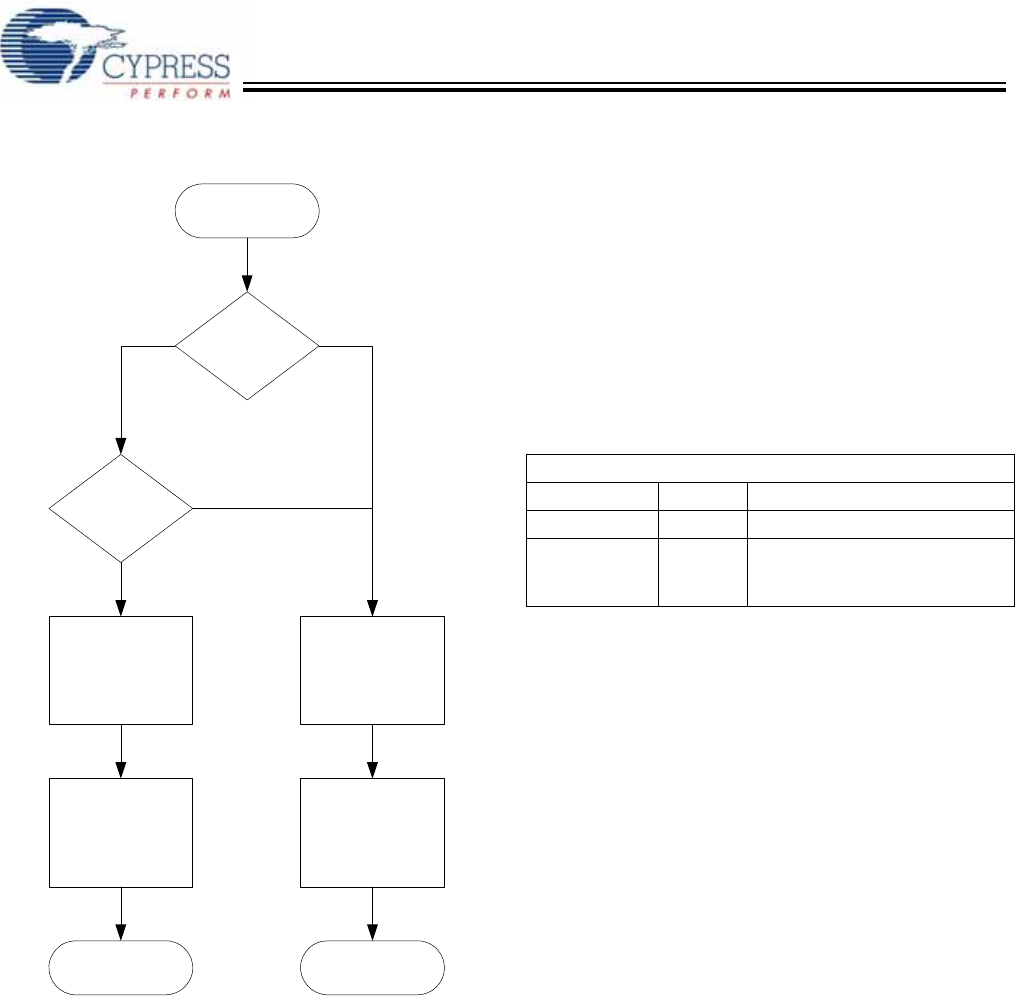
CY7C68033/CY7C68034
Document #: 001-04247 Rev. *D Page 5 of 33
Figure 4. NX2LP-Flex Enumeration Sequence
Normal Operation Mode
In Normal Operation Mode, the NX2LP-Flex behaves as a
USB 2.0 Mass Storage Class NAND Flash controller. This
includes all typical USB device states (powered, configured,
etc.). The USB descriptors are returned according to the data
stored in the configuration data memory area. Normal read
and write access to the NAND Flash is available in this mode.
Manufacturing Mode
In Manufacturing Mode, the NX2LP-Flex enumerates using
the default descriptors and configuration data that are stored
in internal ROM space. This mode allows for first-time
programming of the configuration data memory area, as well
as board-level manufacturing tests.
Default Silicon ID Values
To facilitate proper USB enumeration when no programmed
NAND Flash is present, the NX2LP-Flex has default silicon ID
values stored in ROM space. The default silicon ID values
should only be used for development purposes. Cypress
requires designers to use their own Vendor ID for final
products. A Vendor ID is obtained through registration with the
USB Implementor’s Forum (USB-IF). Also, if the NX2LP-Flex
is used as a mass storage class device, a unique USB serial
number is required for each device in order to comply with the
USB Mass Storage class specification.
Cypress provides all the software tools and drivers necessary
for properly programming and testing the NX2LP-Flex. Please
refer to the documentation in the development kit for more
information on these topics.
ReNumeration™
Cypress’s ReNumeration™ feature is used in conjunction with
the NX2LP-Flex manufacturing software tools to enable
first-time NAND programming. It is only available when used
in conjunction with the NX2LP-Flex Manufacturing tools, and
is not enabled during normal operation.
Bus-powered Applications
The NX2LP-Flex fully supports bus-powered designs by
enumerating with less than 100 mA, as required by the USB
2.0 specification.
Interrupt System
INT2 Interrupt Request and Enable Registers
NX2LP-Flex implements an autovector feature for INT2 and
INT4. There are 27 INT2 (USB) vectors, and 14 INT4
(FIFO/GPIF) vectors. See the EZ-USB Technical Reference
Manual (TRM) for more details.
USB-Interrupt Autovectors
The main USB interrupt is shared by 27 interrupt sources. To
save the code and processing time that normally would be
required to identify the individual USB interrupt source, the
NX2LP-Flex provides a second level of interrupt vectoring,
called Autovectoring. When a USB interrupt is asserted, the
NX2LP-Flex pushes the program counter onto its stack then
jumps to address 0x0500, where it expects to find a ‘jump’
instruction to the USB Interrupt service routine.
Developers familiar with Cypress’s programmable USB
devices should note that these interrupt vector values differ
from those used in other EZ-USB microcontrollers. This is due
to the additional NAND boot logic that is present in the
NX2LP-Flex ROM space. Also, these values are fixed and
cannot be changed in the firmware.
NAND Flash
Programmed?
Load Default
Descriptors and
Configuration Data
Manufacturing
Mode
Load Firmware
From NAND
Enumerate
According To
Firmware
Normal Operation
Mode
Start-up
Enumerate As
Unprogrammed
NX2LP-Flex
NAND Flash
Present?
No
Yes
Yes No
Table 2. Default Silicon ID Values
Default VID/PID/DID
Vendor ID 0x04B4 Cypress Semiconductor
Product ID 0x8613 EZ-USB
®
Default
Device release 0xAnnn Depends on chip revision
(nnn = chip revision, where first
silicon = 001)
[+] Feedback



